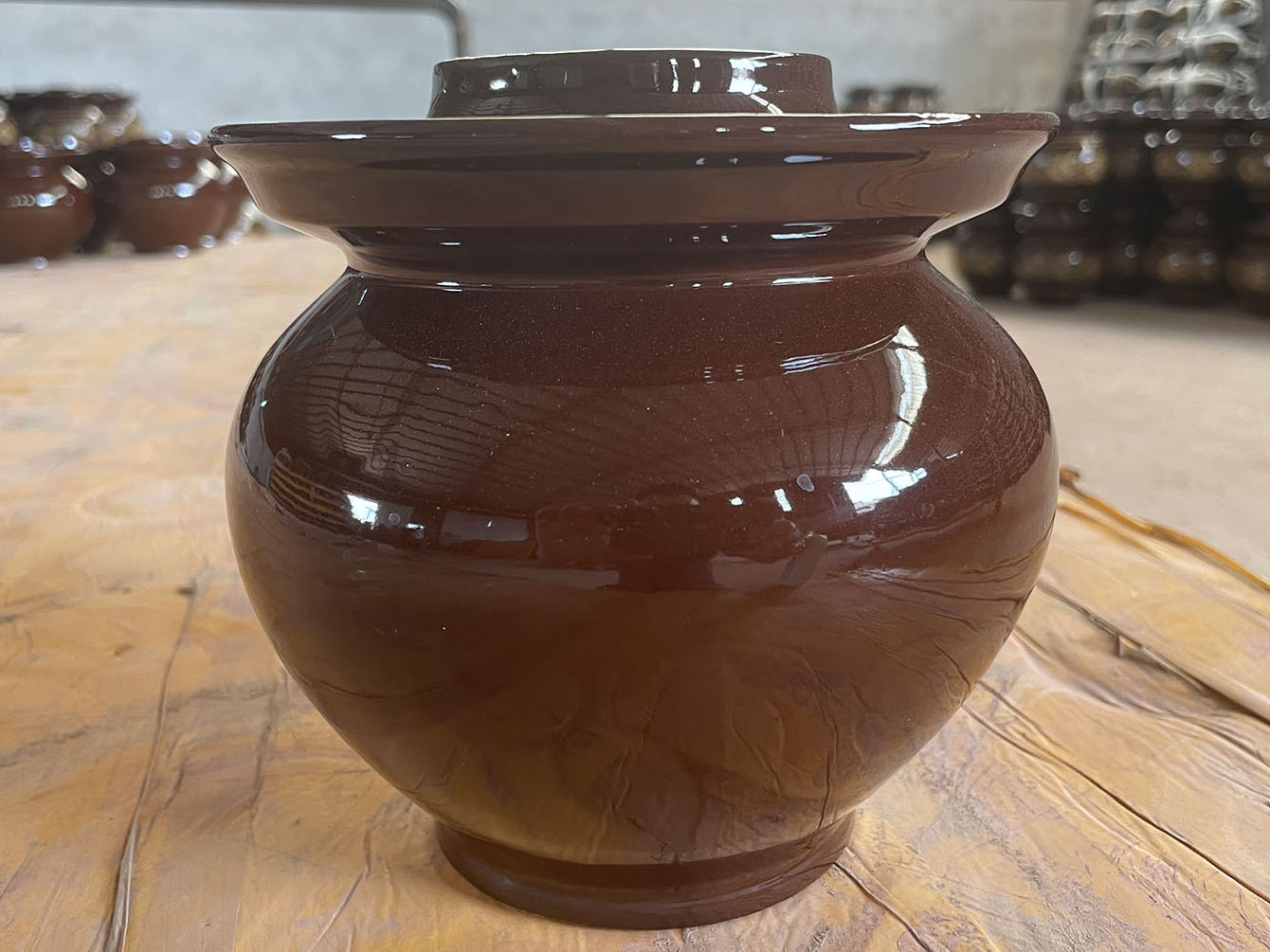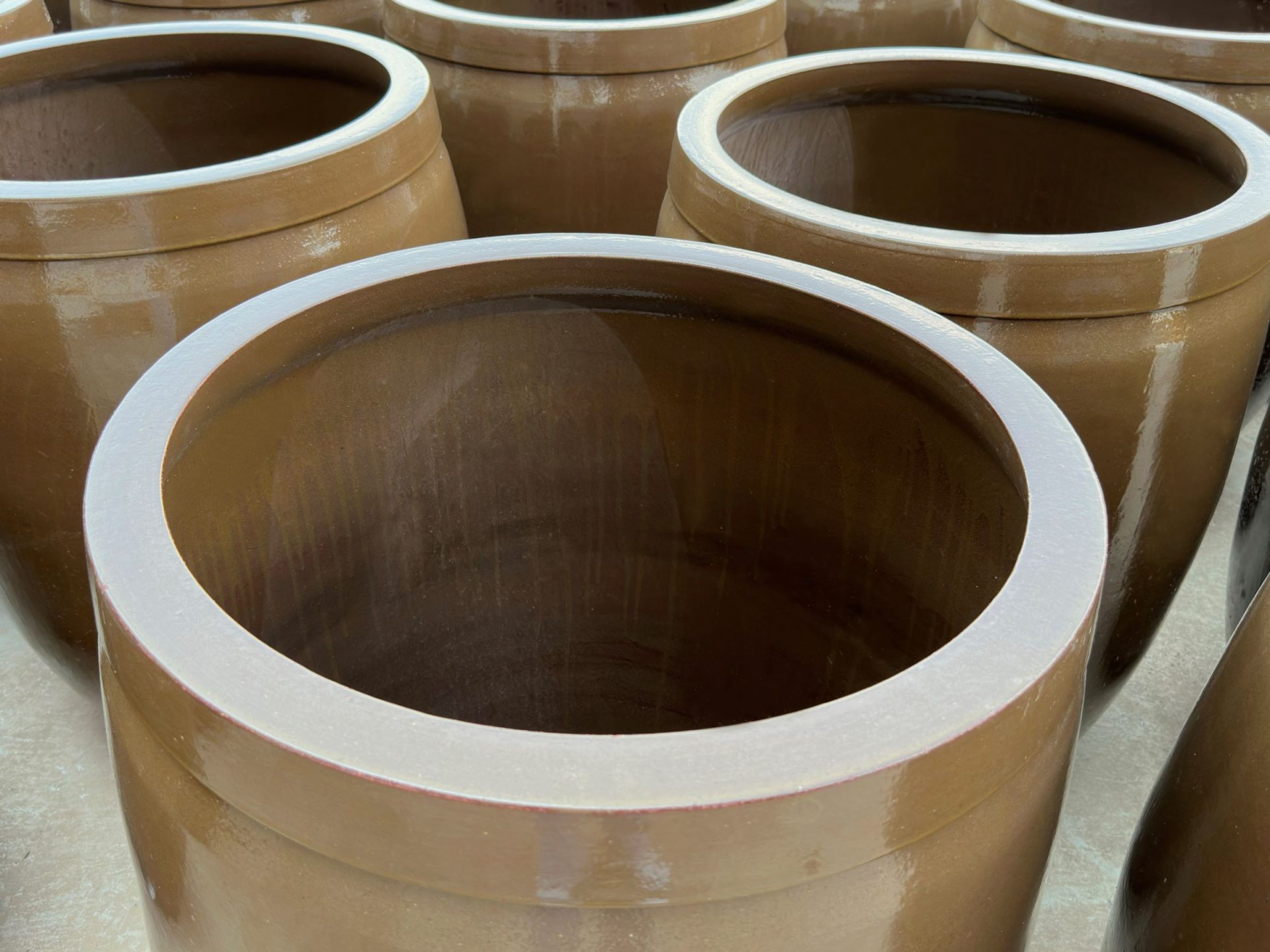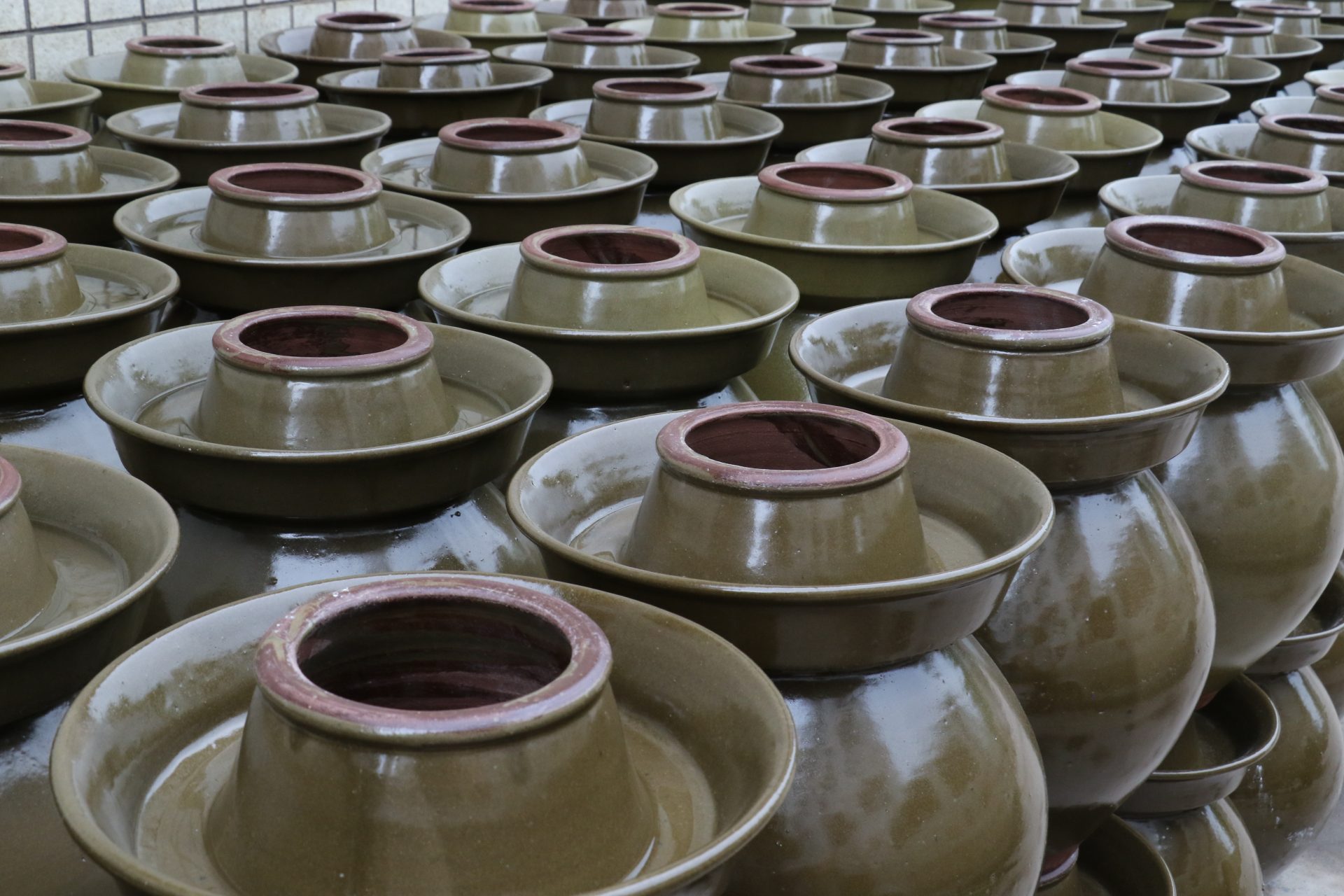How to Choose: Pickle Crocks vs Sauerkraut Crocks
This article aims to analyze the difference between “Pickling Crock” and “sauerkraut crock”, so as to understand the essence of these terms.
To help you more fully understand how to choose a tool for fermentation of pickles or sauerkraut crock. This article will serve as your ultimate guide, analyzing the true content behind these fermentation containers and explaining how as a professional manufacturer, we meet your fermentation needs through meticulous design.
What is Pickling Crock?
Pickling Crock (Kimchi Crocks) is a large fermentation vessel specifically designed for the Lacto Fermentation process.
It is usually made of clay, ceramics, or glass, and its core mission is to create a controlled anaerobic environment for food fermentation, allowing natural lactic acid bacteria to safely convert sugars in vegetables into lactic acid, carbon dioxide, and other flavor compounds.
A standard Picking Crock has the following key features:
● Water Seal
The water seal groove is a signature design style of Pickling Crock.
This practical functional design is beneficial for better fermentation of food in the tank, and the water in the tank can prevent the growth of harmful mold and yeast.
● Weights
The main purpose of weighing stones is to firmly press vegetables below the water surface, ensuring that all ingredients are completely submerged in saltwater, which is the key to successful fermentation. Usually made of glass or ceramic.
● Wide and heavy can body
Large Pickling Crocks are easy to place whole vegetables and handle. At the same time, the thick tank wall has good insulation properties, which helps maintain temperature stability during the fermentation process.
Difference between pickle jar and Sauerkraut Crock
The difference between the pickle crock and the suerkraut Crock is more due to the difference in terms of universality and cultural emphasis, which is essentially a container used for food fermentation.
● Pickling Crock “is a broader general term. In the English context, the term “picking” encompasses various methods such as rapid pickling with vinegar and fermentation with lactic acid bacteria.
Therefore, the name Pickling Crock is more inclusive, suggesting that it can be used to produce various fermented foods, such as pickles, fermented hot peppers, pickled Chinese cabbage, and even kimchi.
● “suerkraut Crock” is a more directional name. Sauerkaut “originates from German and specifically refers to fermented shredded cabbage.
Therefore, when merchants use the name Sauerkraut Crock, they tend to emphasize that their containers are particularly suitable for or optimized for the production of traditional German pickled Chinese cabbage, and may have deeper tanks to facilitate the vigorous compaction of cabbage shreds.
Manufacturer’s perspective: We collectively refer to foods used for fermentation such as kimchi, pickled vegetables, or other fermented foods as fermentation crocks, or kimchi crocks. All are made of clay.
How do we design to meet your core needs
As a professional manufacturer, we understand that what you need is not just a terracotta jar, but a reliable partner who can bring a successful fermentation experience.
Our design provides solutions directly targeting common pain points during the fermentation process:
● Solve the sealing problem
We adopt a water sealed groove design for the kimchi crock. This design is simple and practical. More friendly to kimchi fermentation.
The water in the jar can ensure that the water seal does not dry up, providing continuous protection.
● Ensuring food safety
We strictly use lead free, food safe glazes for internal glazing. This not only makes cleaning easier, but also completely eliminates the risk of heavy metal precipitation, allowing you to ferment with peace of mind.
● Meet personalized customization needs
We provide solutions for food workshops, restaurants, or home made kimchi. Satisfy options in terms of size, glaze color, capacity, and shape
FAQ
FAQ 1: Do I need to prepare different jars for pickled Chinese cabbage and kimchi?
Completely unnecessary. A high-quality kimchi crock is multifunctional.
Between making different batches of fermented foods, simply thoroughly clean the jar, stone press, and inner lid (hot water and baking soda are recommended) to safely use for the next round of fermentation.
Avoid using dishwashing detergent to prevent clay from adsorbing chemical odors.
FAQ 2: Is it normal for the fermentation broth to become cloudy with bubbles and white film on the surface?
This is a very normal sign of fermentation. The turbid liquid and bubbles indicate that lactic acid bacteria are actively working.
The white film on the surface is likely to be harmless Kahm Yeast, just carefully skim it off, and the food below is usually safe.
Only when black, green, or furry mold appears, accompanied by a foul odor, does it mean failure and the entire batch of food needs to be discarded.
FAQ 3: How should I choose between clay jars, glass jars, and plastic jars?
Each material has its own advantages and disadvantages:
Clay jars (our product): The advantages are light avoidance (protecting probiotics), good insulation (maintaining temperature stability), and traditional aesthetics. It is a classic choice that requires careful care.
Glass jar: The advantages are transparency (easy to observe) and easy cleaning. The disadvantage is that it is not light shielded and fragile.
Food grade plastic cans: The advantage is that they are lightweight and durable. The disadvantage is that it may adsorb odors and affect aesthetics.
Conclusion
Pickling Crock and Sauerkraut Crock are only differences in terminology, they are essentially containers used for fermentation.
For enthusiasts who pursue traditional flavors and optimal fermentation results, clay made kimchi fermentation crocks are undoubtedly the most ideal fermentation containers.


